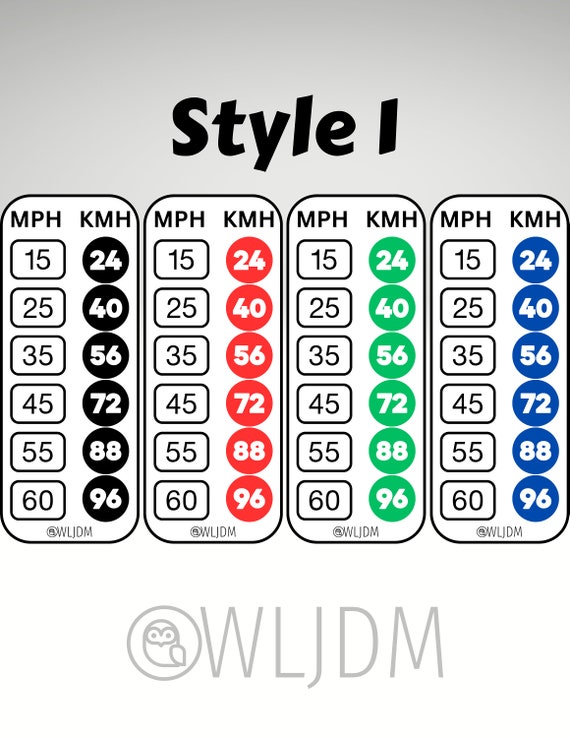Converting speeds from kilometers per hour (KPH) to miles per hour (MPH) is a common task, especially for those who travel or work with vehicles in different regions. Whether you're dealing with speedometers set in metric units or simply trying to understand international driving regulations, knowing how to convert these measurements can be crucial. This guide will walk you through the process of converting 158 KPH to MPH, providing you with both the formula and practical tips.
Understanding the relationship between KPH and MPH is essential for anyone navigating between countries that use different measurement systems. While some regions rely on the metric system, others prefer imperial units. For instance, a car traveling at 158 KPH may seem fast, but translating this into MPH gives a clearer picture for those accustomed to imperial measurements. Let's delve deeper into how to perform this conversion accurately and efficiently.
Understanding Speed Conversions
Speed conversions are an integral part of daily life, particularly for travelers and transport professionals. The difference between kilometers per hour and miles per hour lies in their respective definitions. One kilometer equals approximately 0.621371 miles. Therefore, when converting from KPH to MPH, you multiply the speed by this factor. For example, 158 KPH translates to roughly 98.1766 MPH, making it easier to comprehend the velocity in familiar terms.
This conversion becomes especially relevant during natural events like storms or tornadoes. In the Great Lakes Quarterly Summary - Summer 2022, a recorded wind gust of 98-MPH (158 KPH) highlighted the destructive potential of such weather phenomena. Understanding these figures helps meteorologists and emergency responders assess risks more effectively.
Moreover, historical data often includes speed measurements in various units. An EF-2 tornado touching down in Wyoming with winds reaching 158 KPH emphasizes the importance of accurate conversions. By understanding the scale, individuals can better prepare for severe weather conditions.
Troubleshooting Conversion Issues
When attempting to switch units on electronic devices, users sometimes encounter difficulties. A forum discussion titled Convert Kph To Mph - G4+ - Forums | Link Engine Management illustrates this challenge. Gregconboy158 mentioned struggling to alter settings on a laptop despite numerous attempts. This issue affects not only personal computers but also vehicle systems where speed readings need adjustment.
For instance, modifying properties within specific software might require detailed knowledge of the interface. In Gregconboy158’s case, adjusting settings for a PnP Honda Civic ECU proved challenging due to its unique configuration labeled as DI 4 LF Wheel Speed (kph). Such cases underscore the necessity of precise instructions tailored to individual systems.
Additionally, discrepancies arise when comparing theoretical values against real-world applications. Although mathematical formulas provide exact results, practical implementation may vary depending on hardware limitations or software glitches. Ensuring compatibility across platforms remains vital for seamless operation.
Quarter-Mile Performance Metrics
In automotive contexts, estimating quarter-mile speeds plays a significant role in performance evaluation. Websites employing cookies enhance user experiences while offering tools to calculate estimated velocities based on horsepower inputs. However, these calculations must consider additional factors influencing acceleration rates, including aerodynamics and tire grip.
Returning to our initial figure, 158 KPH equates to approximately 98.1766 MPH. Applying this value to racing scenarios demonstrates its relevance beyond mere unit transformation. Drivers aiming to achieve optimal performance benefit from comprehending such metrics, enabling them to fine-tune engine parameters accordingly.
Furthermore, integrating modern technology facilitates accurate assessments. Advanced simulation programs allow enthusiasts to predict outcomes under varying conditions, promoting informed decision-making regarding modifications and upgrades.
Fujita Scale Insights
The Fujita Tornado Damage Scale categorizes tornado intensity based on observed damage patterns. F3 category storms feature wind speeds ranging from 158-206 MPH (254-332 KM/H), causing severe structural devastation. Exterior walls and roofs frequently succumb to these forces, underscoring the immense power associated with higher-end velocities.
Recognizing these classifications aids communities in disaster preparedness efforts. Emergency management teams utilize such scales to allocate resources efficiently during crises. Public awareness campaigns further emphasize safety protocols necessary for survival amidst extreme weather events.
Interestingly, recent developments in aviation highlight similar principles concerning relative motion. Pilots encountering tailwinds experience increased groundspeeds, exemplified by instances where planes averaged 158 KM/H during favorable conditions. Conversely, headwinds reduce effective progress, illustrating complex interactions between atmospheric dynamics and transportation efficiency.
Practical Applications Across Industries
Across diverse sectors, proficiency in unit conversions enhances operational capabilities. Professional baseball showcases another application through pitcher statistics. Reports indicate Taiwanese pitchers Lin Chen-Wei achieving fastball peaks of 158 KPH (98.2 MPH), attracting interest from Major League Baseball scouts. These achievements reflect rigorous training regimens designed to maximize athletic potential.
Similarly, global commerce relies heavily on standardized measurements ensuring consistency throughout supply chains. Shipping companies coordinate logistics utilizing uniform standards, preventing confusion caused by inconsistent reporting practices. Adherence to agreed-upon frameworks fosters trust among partners operating internationally.
In conclusion, mastering the art of converting between KPH and MPH empowers individuals to navigate multifaceted challenges spanning multiple disciplines. From assessing environmental hazards to optimizing vehicular performances, familiarity with fundamental principles proves invaluable. Embrace these skills confidently, knowing they contribute significantly toward achieving desired objectives.

